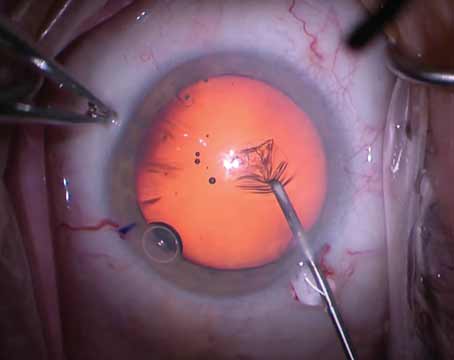Since its inception in 1999, the Accreditation Association for Ambulatory Health Care Institute for Quality Improvement has sought to develop standards to advance and promote patient safety, quality and value in the ambulatory setting. The association promotes a voluntary, peer-based, consultative and educational survey process to advance patient care.
One such survey is the “Cataract Extraction with Lens Insertion” study. From January to June 2015, 79 ambulatory surgery centers nationally participated and submitted information on 2,127 cases. These organizations perform from 92 to 8,000 procedures each year, for a total of 163,568 cataract procedures performed annually.
As a nurse administrator of a busy ophthalmic physician-owned ambulatory surgery center, I have used this report to glean insights that influence our quality improvement and operational initiatives. In the data from the report, our organization was able to benchmark with 78 other organizations in the areas of perioperative times; types of anesthesia administered and who monitors the patient; the average staffing per procedure and hourly wages; and the types of lenses used and cost of each lens inserted.
Perioperative Times
The study provides pre-procedure times, procedure times and discharge times for cataract extraction with lens insertion procedures. These times, for the most part, are within control of the organization and can significantly affect patient satisfaction and operational efficiency.
The range for pre-procedure times was 41 to 151 minutes, with a median and an average of 82 minutes. The organization with the shortest pre-procedure time attributes its efficiency to a few strategies, including dilating patients soon after they arrive in a private room adjacent to the reception area used by its nurses to begin the dilation process.
Patient discharge times ranged from 7 to 49 minutes, with a median and an average of 20 minutes. In addition to having adequate staffing, the organization with the shortest discharge time attributed its efficiency to using topical anesthesia with minimal sedation, having consistent discharge instructions for all surgeons, keeping patients in street clothes for the procedure and streamlining paperwork.
Our organization designs a QI Study on any area where we are out of the average or median range and adapt the best practices to fit our organization. We perform a re-measurement after the corrective actions have been given time to be implemented and tested. The one area where we have noticed the most improvement is in the area of recovery. By adapting the best practices, we have been able to discharge our patients five minutes sooner than before our QI Study was conducted.
Anesthesia Usage
The study defines the types of anesthesia used, who administers the anesthesia and who monitors the patient, which are all important safety issues for patients. This information allows an organization to determine if the type of anesthesia used affects the procedure and discharge time from the facility.
The study indicated that the average procedure time was lowest when IV sedation was used along with a peri-bulbar block. This method reduced procedure time to a 10 minute average (average procedure time for all cases was 13 minutes). It was also noted in the study that in 51 percent of the cases anesthesia was administered and monitored by CRNAs, while 41 percent of the cases had anesthesia administered by an anesthesiologist, who then monitored the patient 36 percent of the time. This information is beneficial in providing patient education when discussing the different anesthesia types and provider qualifications.
Staffing
In an effort to monitor case costs, staffing plays a large role in the cost of each procedure. The AAAHC Institute “Cataract Extraction with Lens Insertion” study, dated July to December 2014, provides information on staffing levels and the mix of staff and hourly wages for various professional staff.
The median staffing for a cataract procedure is four RNs, one CRNA, one LPN/LVN and two technicians. The median hourly wage for each as is follows:
• RN - $30/hour
• CRNA - $100/hour
• LPN/LVN - $22/hour
• Technician - $20/hour
The study supports the need for cross-training and a staff mix that places the appropriately qualified and educated person in each job. It also allows the opportunity to benchmark hourly wages between your organization and that of the participants. All of these factors enable an organization to provide quality patient care in a cost- conscious environment.
Lens Usage and Cost
Finally, another measure that helps control cost while maintaining a high level of patient satisfaction is choosing the correct lens for each patient.
The most common lens used was an acrylic model SN60WF, with a median price of $134. Fifty-five percent of organizations reported receiving a rebate on the lenses they use, 63 percent consign lenses and 36 percent consign and buy lenses.
This information is useful to an organization when meeting with vendors and negotiating pricing and consignments for the lenses it stocks and uses.
Quality Improvement
The overall purpose of this study is quality improvement. The measures in it are tools which providers can use to assess their care, and the report shares best practices from organizations that report exceptional results. REVIEW
Ms. Kilgore is the administrative director at Grand Rapids Ophthalmology Surgical Care Center, and a member of the AAAHC. For information or to receive the full study text, email info@aaahc.org.





